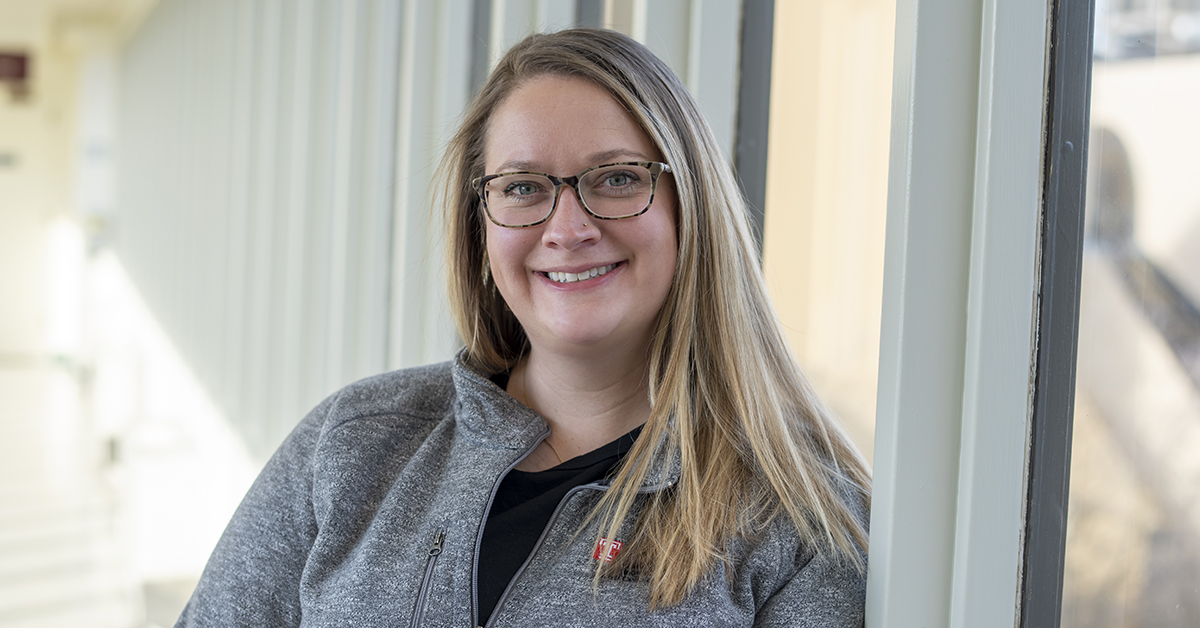
Nurse Navigators Help Ease the Way for Bone Marrow Transplant Patients
-
Nurse navigators play a key role in caring for all patients with cancer—and they’re especially important for patients undergoing a bone marrow transplant (BMT).
These specially trained coordinators serve as a vital support system to make treatment—and life afterwards—more manageable for people who have had a BMT. Nurse navigators help BMT patients have their needs met faster.
That might mean:
- Helping to organize a BMT patient’s medical care
- Answering their questions about their diagnosis or treatment plan
- Helping them cope with treatment side effects
- Providing information about support services, like medical social workers or financial aid.
The nurse navigators in the Fox Chase-Temple University Hospital Bone Marrow Transplant Program are always available to BMT patients.
“I serve as a direct contact,” explained Karen Palmer, BSN, RN,OCN, who provides navigation for bone marrow transplant patients. “Patients are given my name, my number, and they can call or email me directly. And I can get a hold of the clinicians as needed for the patient.”
Guide for post-transplant life
BMTs are treatments that can be used for certain types of cancer that involve replacing a patient’s diseased bone marrow with healthy cells, using either their own cells or cells from a donor. These transplants are complex procedures with a long—and sometimes bumpy—recovery time. In the case of allogenic transplants (transplants that use donor cells), side effects can linger for years.
What’s more, every BMT patient’s experience is different. “The range of healing on the body is very vast and different—it’s not cookie cutter,” Palmer said. “It’s not something you can ‘Google’ and get the right answer for.”
At Fox Chase-Temple University Hospital, we have the cutting-edge technology and expertise to deliver personalized BMT plans. And they’re carried out with help of navigators like Palmer, who can work closely with patients as they adjust to post-transplant life.
In the beginning, it can be hard. “Typically our patients do feel their worst post-transplant,” she explained. “They might still go home and have vomiting, diarrhea, nausea, or no appetite.” She’s also the first-line person if a patient is experiencing symptoms of graft versus host disease (or signs of a flare-up), which can be a persistent problem for some allogenic transplant patients.
But Palmer is more than just a point person for side effects. She guides BMT patients through setting up the post-transplant scans and workups they need, helping to ensure their care stays on track. And she’s there to help patients and loved ones navigate issues with insurance coverage for particular transplant medications—and even offer guidance for dealing with insurmountable financial bills.
Perhaps most important right now, Palmer is also the primary contact for family members who aren’t able to accompany a BMT patient to their appointments because of COVID-19. If a patient has trouble understanding something during a medical visit, a loved one can call Palmer to follow up. “I think my role has increased and become even more important to the family members because they can’t be here physically,” Palmer said.
Learn more about the Fox Chase-Temple University Hospital Bone Marrow Transplant Program.
